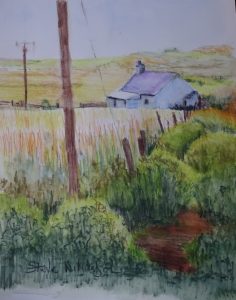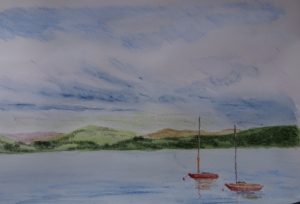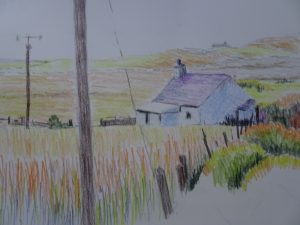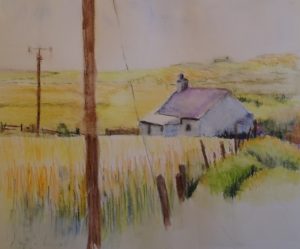I have been using my watercolour pencils again. This is a much more complex drawing, and the fact that I even attempted it freehand speaks volumes about my new found confidence in line drawing.
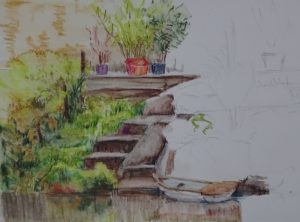 The little garden is full of different levels, plants, and pots, with the reflecting water as an added complication. It is also very green and I am having some difficulty with the varying greens, so I shall have to alter my approach. To this point, I have used the watercolour pencils dry only adding water when I felt happy with the dry work. This has had some splendid results – I love the potted bushes on the top level, and the accidental “cauliflower” on the left which gives a perfect bush shape to work into – and the steps are acceptable. But the plants to the left of the steps are poorly shaped and too uniformly bright.
The little garden is full of different levels, plants, and pots, with the reflecting water as an added complication. It is also very green and I am having some difficulty with the varying greens, so I shall have to alter my approach. To this point, I have used the watercolour pencils dry only adding water when I felt happy with the dry work. This has had some splendid results – I love the potted bushes on the top level, and the accidental “cauliflower” on the left which gives a perfect bush shape to work into – and the steps are acceptable. But the plants to the left of the steps are poorly shaped and too uniformly bright.
I am going to try mixing my colours on a scrap of paper then lifting them with a wet brush to see if I can find a subtle way to do this area. Then again, the “cauliflower” reminds me of one way that Zoltan Szabo paints trees, so maybe I can explore this idea as well.

